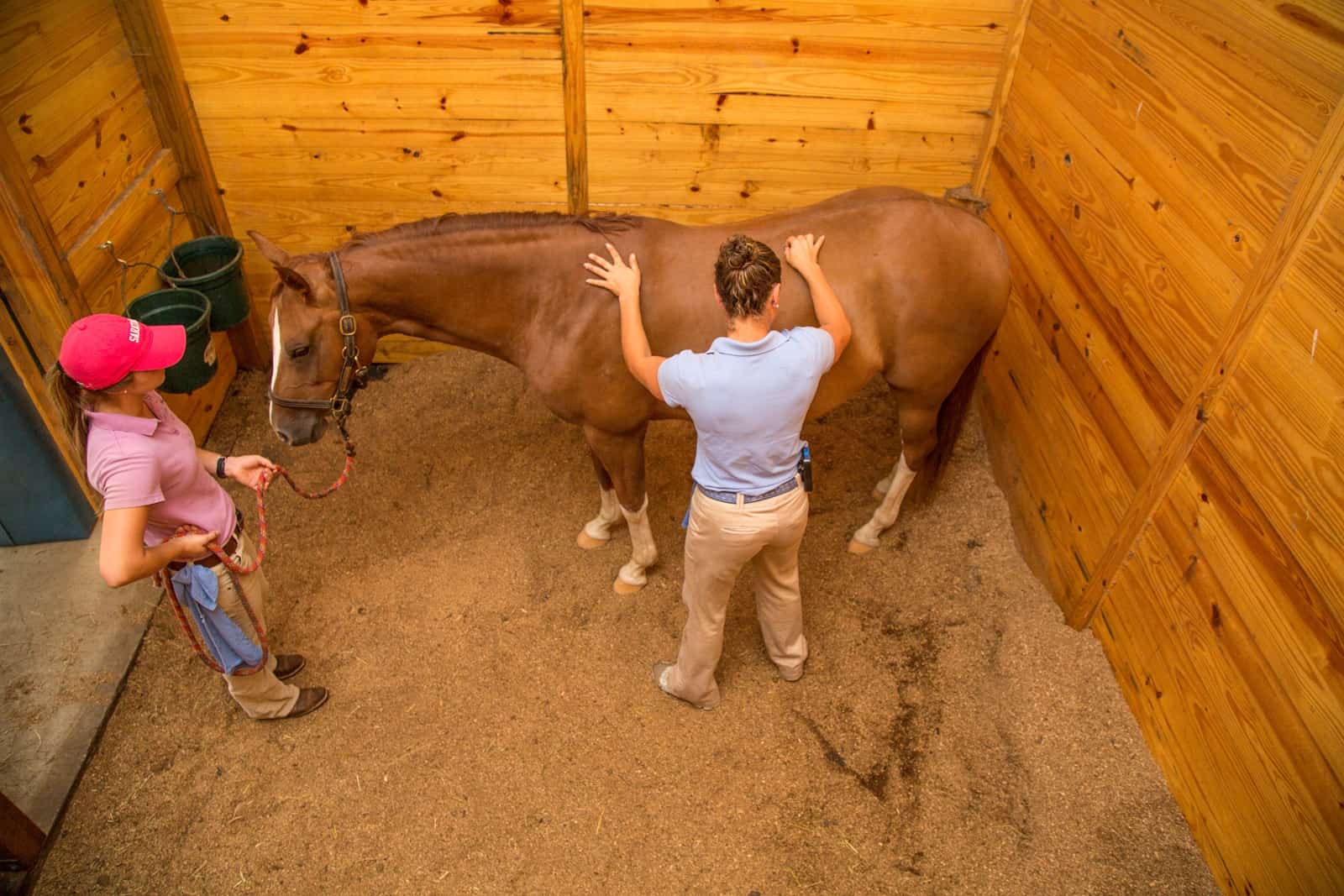How Veterinarians Use Chiropractic to Assess Equine Back Pain

Veterinarians are using chiropractic techniques more frequently to evaluate and treat back disorders in horses. These therapies are not taught in vet school, however, so Kevin Haussler, DVM, DC, PhD, Dipl. ACVSMR, Orthopaedic Research Center faculty at Colorado State University’s College of Veterinary Medicine and Biomedical Sciences, in Fort Collins, introduced their basic principles at the 2018 American Association of Equine Practitioners Convention, held Dec. 1-5 in San Francisco, California.
Chiropractic, derived from the Greek words for “hand” and “to practice,” encompasses a variety of manual therapies, said Haussler, including touch, massage, stretching, joint mobilization and manipulation, and induced spinal reflexes. Specially trained veterinarians often use it to address poor performance or vague lameness, to evaluate the spine, and as a conservative treatment option for musculoskeletal issues.

Researchers have reported back issues in 13-94% of study horses and 23-32% of horses with lameness. Diagnosis, however, is often difficult, and Haussler said the few treatment options veterinarians have include chiropractic, acupuncture, and surgery
Create a free account with TheHorse.com to view this content.
TheHorse.com is home to thousands of free articles about horse health care. In order to access some of our exclusive free content, you must be signed into TheHorse.com.
Start your free account today!
Already have an account?
and continue reading.

Written by:
Alexandra Beckstett
Related Articles
Stay on top of the most recent Horse Health news with















